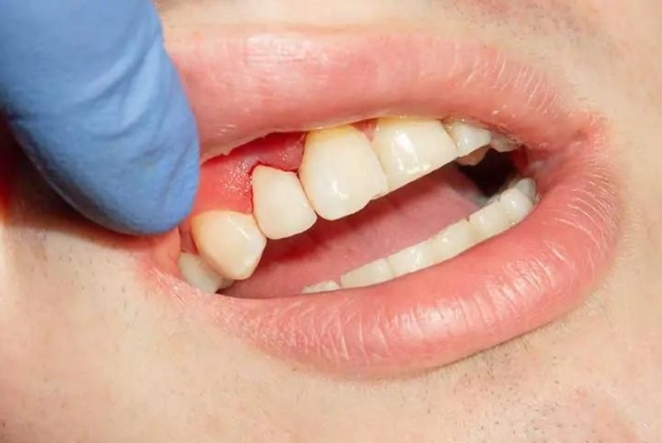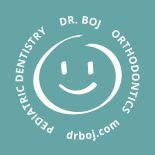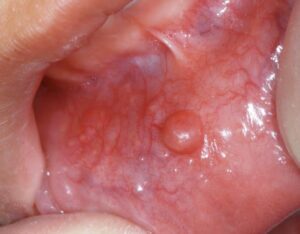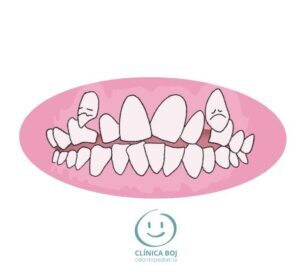Periodontal disease in the gums of children and teenagers
Can a child have periodontal disease?
Periodontal disease comprises a group of pathologies that affect the soft tissues that support the tooth. A very common cause is the lack of regular dental and oral hygiene.
The most frequent types of periodontal diseases are gingivitis and chronic periodontitis. Undoubtedly, children, teenagers or young people can also suffer from chronic periodontitis despite their age.
Although gingivitis is somewhat everybody knows, many families still ask what the signs of gum disease are. To a lesser extent, this also happens with chronic periodontitis.
What causes periodontal disease in children?
The main origin of periodontal disease is the accumulation of bacterial plaque around the teeth and gums. Given this, starting from healthy gums, any individual responds with the appearance of inflammation of the gums, that is, gingivitis.
This inflammatory picture is accompanied by reddening of the gingival tissue and bleeding, spontaneous or when brushing. Check further information on Dental Cleaning at Boj pediatric dentistry.
It is common for gingivitis to end up giving rise to periodontitis and it may become chronic. Specially, when this situation persists over time, or in those people with a greater genetic predisposition or acquired due to external factors.
When does chronic periodontitis happen in children and young people?
Chronic periodontitis consists of formation of periodontal pockets. These are pockets that begin in the area where the teeth meet the gum (gingival neck).
These pockets produce a loss of attachment of the tooth and bone level around it. Generally speaking, it is known as “loss of gum support”. In this severe periodontal disease, there is both, loss of supporting gum level and supporting bone.
Apart from bleeding gums when brushing or flossing your teeth, other signs that can appear in case of chronic periodontitis are:
- tooth sensitivity,
- pain when chewing,
- loose teeth,
- infections that can cause abscesses on gum tissue,
- bad breath and gum recession.
What are periodontal diseases?
The current classification of periodontal diseases includes a wide variety of categories based on clinical diagnosis. The identification of the following conditions in the gums allows us to choose the correct treatment option for each disease:
- Gingival diseases, at an early stage.
- Chronic periodontitis.
- Periodontal abscesses.
- Aggressive chronic periodontitis.
- Necrotizing periodontal diseases, where plaque and tartar may cause deep pockets and tooth loss.
- Periodontitis associated with endodontic lesions, or chronic apical periodontitis.
- Acquired or developmental deformities or conditions, such as hormonal changes.
- Periodontitis as a manifestation of systemic diseases.
How do we diagnose a periodontal disease in a child or teenager?
The patient’s oral health history, together with the clinical examination, are the basis of periodontal disease diagnosis. Periodontal screening in children and teenagers should be a simple, fast and a well-tolerated method for the patient. This will identify periodontal problems that indicate the need for treatment to the pediatric dentist.

The best way to diagnose chronic periodontitis in kids is by probing to measure attachment loss and X-ray to reveal bone loss. This last problem is popularly known as “loss of bone in the gum”.
What are the predisposing local factors related with periodontal disease in children and young people?
- Poor nutrition or malnourished children and teenagers.
- Obesity.
- Stress.
- Diabetes.
- Trauma in the oral area, such as a sports dental traumatism.
- Calculus or calcified dental plaque.
- Caries.
- Tooth position.
- Injury caused in the process of medical treatment, such as through the prescription of a medicine that ends up doing harm or through an incorrect diagnosis.
- Anatomical features.
Why should your child visit a pediatric dentist in case of having periodontal problems?
During childhood, the application of this procedure in the mixed dentition and in teeth that are not fully erupted can be very difficult. Therefore, pediatric dentists are prepared to detect marginal alveolar bone loss on bitewing or periapical radiographs as a specific diagnostic sign of periodontitis.
In the adolescent, periodontal probing is the most appropriate screening method. It is important to differentiate between the clinical use of probing performed as a complete periodontal examination and that used as a screening tool.
On the other hand, when a complete periodontogram is performed, circumferential probing is performed to evaluate all locations around the tooth. Therefore, if there is chronic periodontitis in an adolescent or young person, this diagnostic method is more reliable. On the other hand, in routine screening the loss of insertion of all locations is not recorded.
What is the most common periodontal disease in children?
The most common periodontal disease is gingivitis, which is also the mildest. In pediatric dentistry clinics, it is very common to visit babies, children and teenagers that have inflammation of the gums, that is, gingivitis.
Over time, classifying periodontal diseases in pediatric patients has caused some confusion when analyzing their prevalence and spread.
Also, signs of periodontal disease include brushing-induced bleeding due to plaque buildup resulting in gums inflammation from inadequate dental care.
Can anxiety cause periodontal disease?
For sure, anxiety does not cause periodontal disease, but we can consider it a predisposing factor.
Yes, an association between chronic periodontitis and anxiety exists, as it can reduce the body’s immune system response. Therefore, emocional disorders can contribute to the progression of the disease, as the possibility of an infection increases, affecting in some cases the gums.
What is a modifiable risk factor for periodontal disease in children?
Finally, with proper guidance from a dentist or hygienist on oral and interdental hygiene methods, the situation can usually be reversed and not cause future difficulties.
Once other risk factors have been ruled out, we teach brushing techniques and flossing (to clean the surfaces between the teeth). See our blog on the Advantages of using fluoride in children.
To end, scaling and root planing is used in case of aggressive periodontitis. The dentist or hygienist will perform a deep professional cleaning using root scaling followed by root straightening, and finally ending with root smoothing.
References:
Boj JR, Ferreira L. Atlas de Odontopediatría. Editorial Ripano, Madrid, 2010.
Boj JR, Delgado R, Espasa E, Hernández M, Cortés O. La evaluación con pruebas de elección múltiple en odontopediatría. Universidad de Barcelona, Barcelona 2020.
Boj JR, Auría B. El dentista infantil enseña Odontopediatría. Gaceta Dental, Editorial Peldaño. Madrid 2021.








